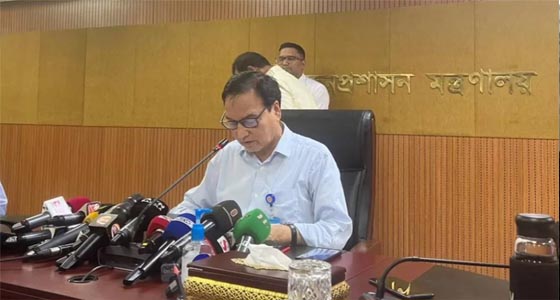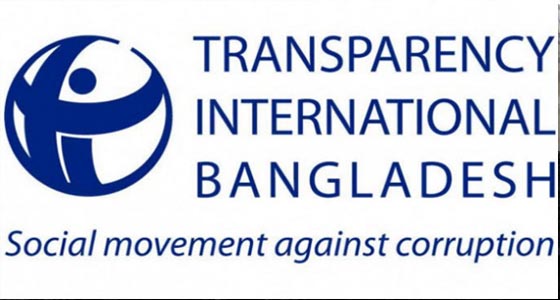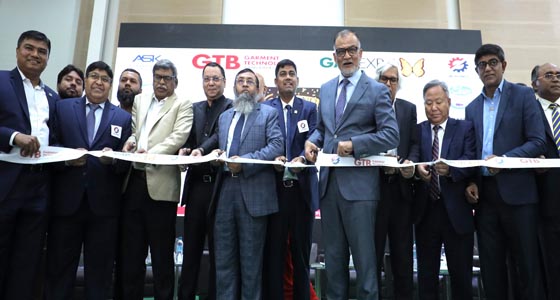Opening Farakka Barrage gates a normal procedure during monsoon, says India
- Last Update : 03:27:29 pm, Tuesday, 27 August 2024
- / 882 Read Count
Staff Correspondent
India’s Ministry of External Affairs has officially addressed the concerns raised about potential flood risks in Bangladesh following the opening of all gates at the Farakka Barrage.
“We have seen fake videos, rumours and fear-mongering to create misunderstanding. This should be firmly countered with facts,” the ministry’s spokesperson Randhir Jaiswal said in a statement on Monday.
The statement clarified that the opening of the Farakka Barrage gates, allowing 1.1 million cusecs of water to flow into the Padma river system, is a “normal occurrence” during the monsoon. Jaiswal said whenever heavy rainfall increases water levels in the upstream Ganges basin, it is routine to open the barrage gates.
“It is to be understood that Farraka is only a barrage and not a dam. Whenever, water level reaches the pond level, whatever inflow comes that passes,” he added.
India said it regularly exchanges information about river water flow with Bangladesh’s Joint River Commission officials as per protocol, and this has been done in this instance as well. The decision to open the Farakka Barrage gates has sparked extensive discussion on social media and in Bangladeshi media, particularly following the unprecedented flooding in several districts of Bangladesh, including Feni and Cumilla.
Allegations were made on social media blaming India for the flooding, and protests were held at various universities in response to the release of water from Tripura’s Dumbur Hydropower Station.
India has denied these claims, with Tripura’s Power Minister Ratan Lal Nath asserting that no gates at the Gomati Hydropower Station were opened.
The controversy has intensified with reports that all 109 gates of the Farakka Barrage were opened, prompting widespread debate about the potential impact on Bangladesh.
News18, citing officials from the barrage authority, reported that all the gates were opened due to a significant rise in water levels caused by heavy rainfall in Bihar and Jharkhand.
The report said the barrage is now releasing 1.1 million cusecs of water, which has led to concerns of flooding in Murshidabad and other areas.
The Farakka Barrage, located about 18 kilometres from the Bangladesh border in West Bengal’s Murshidabad district, was fully operational by 1975.
The upstream water holding capacity of the barrage is 26.24 metres, with a danger level of 22.25 metres.
News18 also reported that the barrage could have been damaged if the water was not released, adding, “The release of water from the Farakka Barrage has already triggered concerns in Bangladesh about potential flooding.”
Reports on the impact of the gate opening have also surfaced in Bangladeshi media outlets.
“The barrage authority is always on high alert. Given the sudden rise in water pressure, it was essential to open all 109 gates to prevent significant damage. Currently, 40,000 cusecs of water are being released into the feeder canal and 1.1 million cusecs downstream,” Bangladeshi newspaper The Daily Samakal quoted Farakka Barrage General Manager RD Deshpande as saying.
Bangladeshi media outlets have been speculating on which districts might be affected if the barrage gates remain open.
However, the Water Development Board Rajshahi zone chief engineer Mokhlesur Rahman said there has not yet been any noticeable impact on the Padma River in Bangladesh.
“During the monsoon, it is common for all gates of the Farakka Barrage to remain open. If they were not, we would not receive this water. However, the current floodwater is a regular monsoon occurrence, not the result of a sudden flash flood, so there is no immediate cause for alarm,” Rahman explained.
Enamul Haque, a gauge reader at the WDB’s Rajshahi zone, said the water level at the Rajshahi point of the Padma River was 16.28 metres at 6am on Monday, rising slightly to 16.30 metres by 6pm.
The danger level at this point is 18.05 metres, meaning flooding would only be declared if the water exceeds this limit.
“The reported opening of all gates at the Farakka Barrage has not yet impacted the Padma. The effects of this water will take time to reach Rajshahi, possibly becoming evident starting [Tuesday],” Haque added.
Haque also said if heavy flooding occurs in India, more water is expected to enter Bangladesh via the Farakka Barrage, which could lead to flooding in the low-lying areas of Rajshahi, Chapainawabganj, Pabna, Sirajganj, Kushtia, Rajbari, Manikganj, and surrounding districts.
Sardar Uday Rayhan, executive engineer at the WDB’s Flood Forecasting and Warning Centre, does not anticipate any immediate impact from the Farakka Barrage on Bangladesh.
“We are not seeing any significant increase in water levels as a result of the Farakka Barrage opening. The water levels in the Ganges basin appear stable, and we expect this stability to continue over the next five days. There is no immediate risk of the water level reaching the danger mark,” he told bdnews24.com on Monday.
When asked whether India had provided any information about the Farakka gates being opened, Water Resources Secretary Nazmul Ahsan told bdnews24.com: “The gates mentioned as being opened at Farakka were already open, as they usually are during the monsoon. No prior warning is issued in such cases, just as we open the gates of our Teesta Barrage. We have checked the water levels in Rajshahi, and they remain stable.”
















